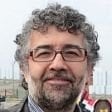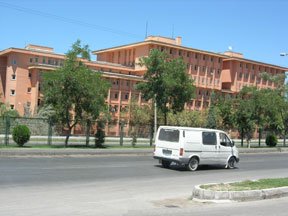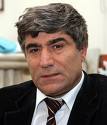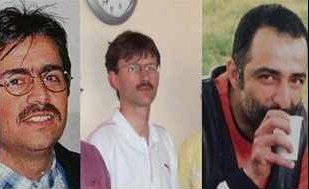Camera "Not Working" in Dink And Zirve Cases
The Turkish public is discussing the disconcerting similarities between the murders of Turkish-Armenian journalist Hrant Dink and the three Christian men at Zirve Publishing in Malatya, all murders targetting different identities. It seems that the similarity does not stop there; in both cases, evidence has disappeared.
Akbank recordings of relevant time gone
After Hrant Dink was murdered on 19 January, it only occured to the prosecution to analyse recordings of the near-by Akbank branch after Dink family lawyers called for such an analysis.
Hrant Dink's family identified murder suspect O.S. from security cameras of shopkeepers in the area. However, although the Akbank's cash machine camera had recordings from the previous day and until the afternoon of the day of the murder, there were no recordings of the murder, which took place at around 3 pm.
If it had been possible to analyse the recordings, it would have been possible to find out more about some suspicious people who entered and left a building site near the murder site before the murder.
When the police did not think of analysing the cameras, the joint plaintiffs intervened. But when an investigation was started, the building site had long been completed...
Ten-day recordings in hospital destroyed
In the Zirve murder case, there have been similar inconsistencies. Emre Günaydin, the main suspect in the three murders, jumped from the third floor of the Agbaba Apartment where the murders took place on 18 April. Seriously injured, he was taken to the Inönü University Hospital, where two cameras were installed in his room to record 24 hours a day.
However, it has since emerged that the recordings have been "lost", and that it is thus not possible to know who visited Günaydin during his stay in hospital.
Officer organising recordings is himself implicated
Lawyers have analysed the case file and have found that the Malatya prosecution ordered a change in cameras because they did not record voices. So, ten days after the murder, security officers replaced the old cameras with new, sound-recording ones, but in the process, "they were not able, for technical reasons, to copy the ten-day recordings" and destroyed them.
Malatya Police Chief Ali Osman Kahya had denied that the recordings were destroyed, saying that they had been handed over to the court. However, the Police Department for Smuggling and Organised Crime told the prosecution that it with the existing technological possibilities it had not possible to copy the recordings into media format, and that the recordings had been destroyed.
Furthermore, it has emerged that lieutenant H.I., who was commissioned by the prosecution to organise the recordings in hospital, is suspicious himself.
A letter sent to the Presidency of the Union of Turkish Protestant Churches on 25 May implicated several people in the murder, including lieutenant H.I., who is said to have been one of the incitors of the murders.
In the letter it said, ""the persons encouraging and directing Emre Günaydin were our commander M. Ü. and a lecturer at the theology faculty, R. Balat. (Polat). Balat was working with our commander M.Ü. for around 4-5 months. The first person to contact Balat was H. I., the commander of the university police station. Later, contacts with our regiment commander were made through sergeant M. C., with the code name Seyhmus. Particularly before and after the event, these meetings were frequent." (EÖ/AG)
BİA MEDIA MONITORING REPORT 2024
The government made journalists' lives a living hell in 2024

BİA MEDIA MONITORING/OCTOBER-NOVEMBER-DECEMBER 2024
Truth concealed through repression from all sides targeting journalists
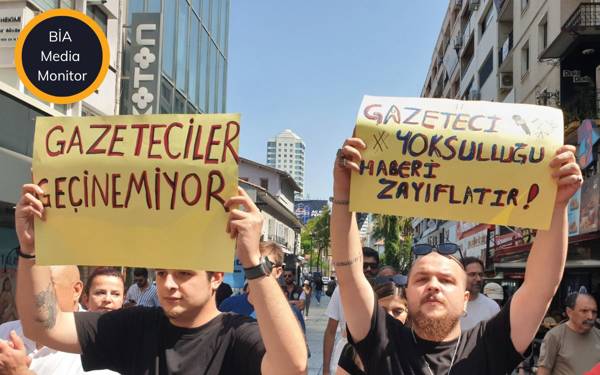
BİA MEDIA MONITORING REPORT
Just silence the journalist, and I won't touch you!

BİA MEDIA MONITORING APRIL-MAY-JUNE 2024
Journalists are on the target and have no legal security anymore!
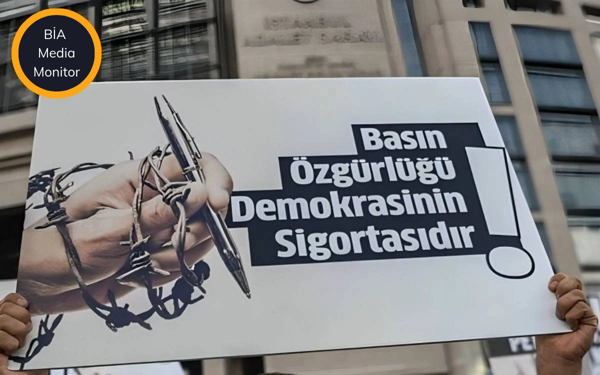
BİA MEDIA MONITORING REPORT
The era of 'judicial control' confinement and torture in journalism





